Page 2 of 2
Testbed
Motherboard: DFI DK P45 T2RS (Courtesy of DFI)
Processor: Intel Core 2 Duo E8400 @ 3.0GHz
Memory: OCZ DDR2 PC2-6400 CL 3-4-4-15 FlexXLC Edition 2x1GB (Courtesy of OCZ)
Graphics card: Sapphire HD 4670 512MB GDDR4 (Courtesy of Sapphire)
Club3D HD 4670 512MB (Courtesy of Club3D)
MSI HD 4850 T2D512 (Courtesy of MSI)
BFG 9600GT OCX ThermoIntelligence (Courtesy of BFG)
PSU: OCZ EvoStream 720W SLI (Courtesy of OCZ)
Hard drive: Seagate Barracuda 7200.9 80GB SATA (Courtesy of Seagate)
CPU Cooler: OCZ Gladiator MAX (Courtesy of OCZ)
Case fans : Gelid WING 12 UV Blue (Courtesy of Gelid)
Benchmarks
We must remind you that all of the test are done at maximum settings. The HD 4670 will surely give much better results at lower quality settings and since we are talking about a mainstream card, medium settings make a lot of sense.
Futuremark Tests
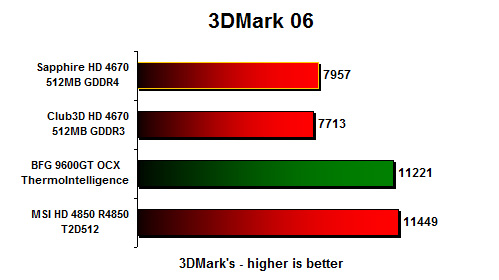
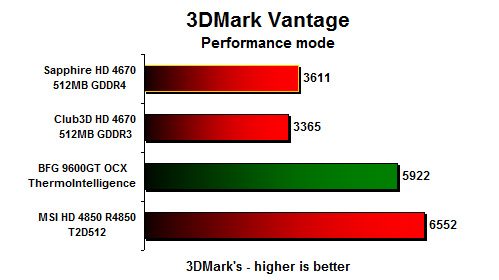
In both 3DMark 06 and 3DMark Vantage, the Sapphire HD 4670 with GDDR4 memory is clearly a bit faster than the Club3D's HD 4670 with GDDR3 memory, despite the fact that they have the same GPU clock. The higher clocked memory gives Sapphire's HD 4670 a clear win over the competition, at least in Futuremark benchmarks.
Games
The situation is similar in games, as the HD 4670 isn’t made for gaming at high resolutions with filters. It will give you a decent frame rate at lower resolutions, and once AA and AF are turned on, the framerate drops significantly.
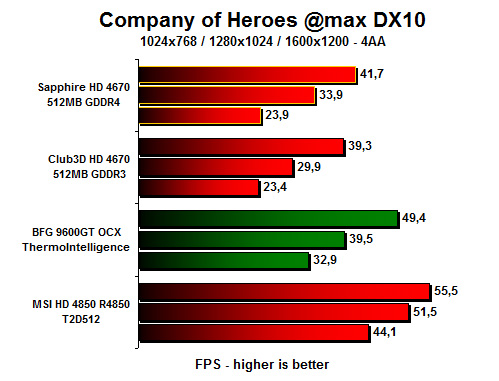
As you can see from the results, Sapphire's HD 4670 is faster than the Club3D's reference clocked HD 4670. At a higher resolution the 128-bit memory bus and the sheer lack of GPU power shows that this card just isn't made for high resolution gaming with filters and higher clocked memory can't change that fact.
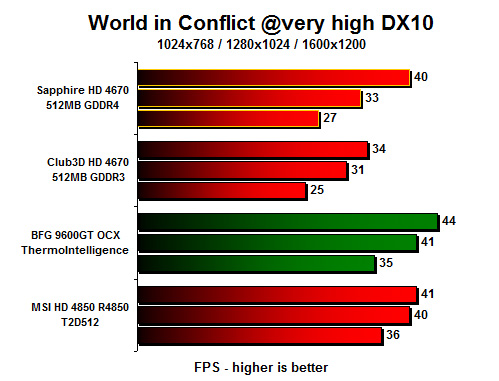
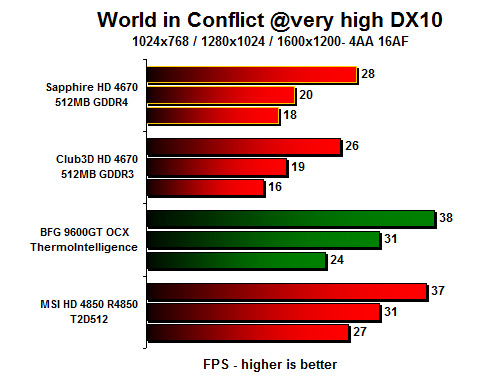
The same thing happens in World in Conflict. At lower resolutions, Sapphire's HD 4670 takes the lead over the competition but once the AA and AF comes into the game, the card simply has no muscle to cope.
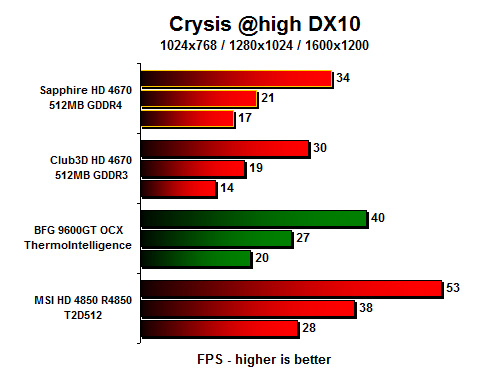
In Crysis, the card manages to even get over the magical 30FPS but only at 1024x768 and without filters. The tests were of course done at very high settings and it would be more reasonable to run it at medium settings, where this card would manage to pull some higher FPS count, even at higher resolutions.
Overclocking
Our sample managed to hit 780MHz for the GPU and 1,150MHz (2,300MHz) for the memory. The card could probably go few MHz higher but this was the most stable combination that we managed to find.
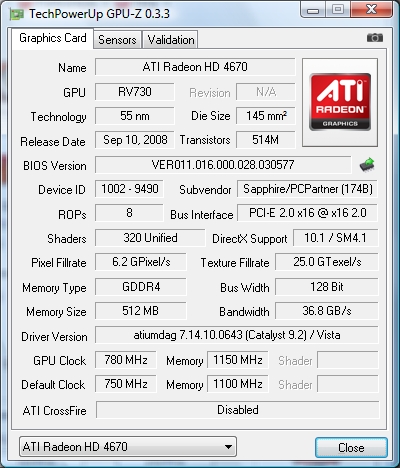
This overclock was enough to raise the score in 3DMark 06 by 285 points and 182 points in Futuremark's 3DMark Vantage. Even in Crysis we see quite a boost, but again only at lower resolutions.
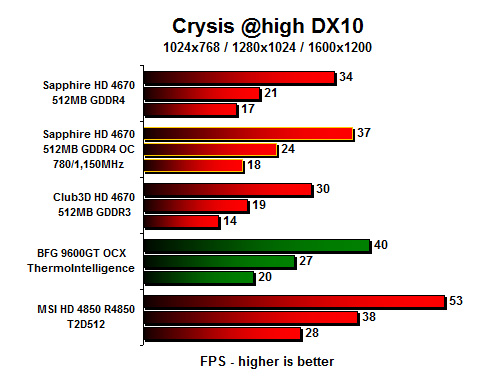
We were really surprised by the temperatures that we managed to get when the card was overclocked. We mentioned that we couldn't get the card to go over 60°C unless it was overclocked, and even then the maximum temperature that we have seen was 61°C, and that was for a short time as fan simply spins up to 47% and the temperature quickly falls below the 60°C mark.
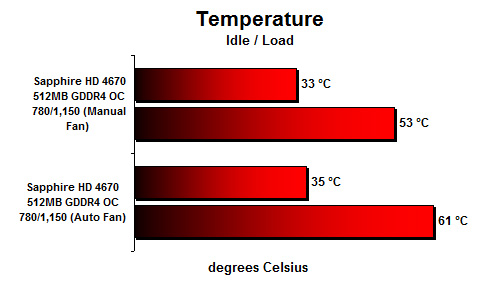
As you can see from the results we only had slightly increased temperatures when the card was overclocked which means that Sapphire did a hell of a job with this cooler.
Conclusion
Sapphire has done it again. It made a non-reference card that costs almost the same as the reference one but features higher clocked GDDR4 memory and a great non-reference cooler. The GDDR4 memory does bring a certain gain, but unfortunately, nothing spectacular. On the other hand, the cooler does a great job cooling this card, as the temperatures aren't even comparable to the reference cooled card and it is very quiet even when pushed to spin at 100%
The Sapphire HD 4670 512MB GDDR4 card is currently listed in Europe for €68,18. This is a lite retail/bulk package and the reference card in the same package costs €62,69. The same cards in full retail package are listed at €72,55 and €75,92, respectively. You can check them all out here.

The HD 4760 has a decent GPU that can cope up with Crysis, and Sapphire has made this card even better. Due to the fact that the cooler is very silent, and that it has a native HDMI output, some users might find it very suitable for HTPC systems that can take full height PCB cards. It also doesn't need an additional PCI-Express power connector, which is a great plus. The low power consumption also makes it ideal for upgrades, as you probably won't need to upgrade your PSU along with your graphics card.
The price is just right and it is a bit more expensive than the reference card, but as it has a good non-reference cooler and it comes with higher clocked GDDR4 memory we can certainly recommend it if you are shopping for an HD 4670.
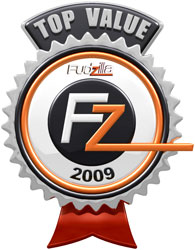
« Prev Next
